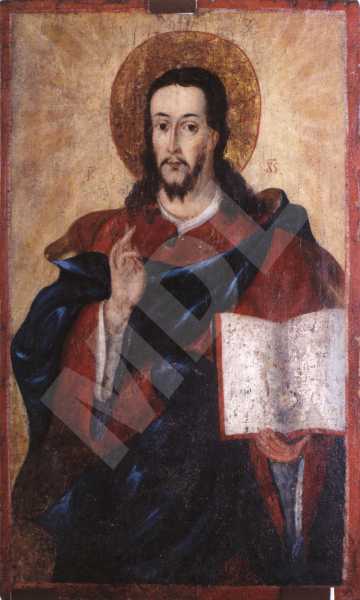The Blessing Christ
Type:
Icon
Period:
From
the end of the
18 century
to
the beginning of the
19 century
Toma Vishanov-Molera, born around 1750, painter of icons and murals, founder of the Bansko school of art. He grew up in the family of the clergyman Vishan. Around 1765 he went to Vienna, where he studied painting. It is not known who were his teachers there or when he returned to Bansko. His fellow villagers called him the Moler, Molera(from German Maler ‘painter’), whence the entire family's surname. Under the influence of the European 18th century art Toma Vishanov painted his works in a new manner, unknown until then in Orthodox art. The figures are realistic, vivid, expressive. Toma Vishanov is an innovator in the early period of Bulgarian Renaissance. His ideas on art were not understood and at first were rejected by his contemporaries. His work has not been studied extensively. He died after 1811 in Bansko.
Dimmensions (cm):
55
/ 36
/ 2.5
Location
Country: Bulgaria
Province: Blagoevgrad
Town: Bansko
Museum: Museum complex
Source
Country: Bulgaria
Province: Blagoevgrad
Town: Razlog
Church: St. Great Martyr George
Description
Christ is portrayed to the waist, blessing with his right hand, and holding a book in his left hand. The representation differs to a considerable degree from the traditional one in similar compositions on the theme of "The Blessing Christ." The iconographer has painted rather a portrait of a nobleman, than of an iconographic figure. This has been achieved by means of an extremely fine modeling, a delicate line-work, a dynamic and lively contour, generalizing the overall treatment of the form. The image is alien to all the typological cliches, going beyond the framework of the traditional for that period representations of Christ the Great Hierarch, Christ the King of Kings, or Christ Pantocrator. This image is a novel and unexpected phenomenon, which had probably been met in the past by the painter's contemporaries with surprise and probably with disapproval.
Iconographical technique: Oil
Base material: Wood
The icon's base is a one-piece softwood panel, reinforced with two additionally inserted beams.
State, restoration traces and comments
There are along the aureole traces of a number of nails, which fact speaks for the previous existence of a metal cover. There are no traces of any previous restorative intervention.


